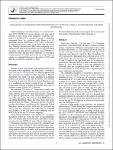Challenges in estimating the effectiveness of 2 doses of Covid-19 vaccine beyond 6 months in England
| dc.contributor.author | Horne, EMF | |
| dc.contributor.author | Hulme, WJ | |
| dc.contributor.author | Keogh, RH | |
| dc.contributor.author | Palmer, TM | |
| dc.contributor.author | Williamson, EJ | |
| dc.contributor.author | Parker, EPK | |
| dc.contributor.author | Walker, VM | |
| dc.contributor.author | Knight, R | |
| dc.contributor.author | Wei, Y | |
| dc.contributor.author | Taylor, K | |
| dc.contributor.author | Fisher, L | |
| dc.contributor.author | Morley, J | |
| dc.contributor.author | Mehrkar, A | |
| dc.contributor.author | Dillingham, I | |
| dc.contributor.author | Bacon, S | |
| dc.contributor.author | Goldacre, B | |
| dc.contributor.author | Sterne, JAC | |
| dc.date.accessioned | 2023-12-05T10:21:39Z | |
| dc.date.available | 2023-12-05T10:21:39Z | |
| dc.date.issued | 2023-09-01 | |
| dc.identifier.issn | 0002-9262 | |
| dc.identifier.issn | 1476-6256 | |
| dc.identifier.other | kwad179 | |
| dc.identifier.uri | https://pearl.plymouth.ac.uk/handle/10026.1/21771 | |
| dc.description.abstract |
Understanding how the effectiveness of coronavirus disease 2019 (COVID-19) vaccine changes over time and in response to new severe acute respiratory syndrome coronavirus 2 (SARS-CoV-2) variants is crucial to scheduling subsequent doses. In a previous study, Horne et al. (1) quantified vaccine effectiveness (VE) over 6 consecutive 4-week periods from 2 weeks to 26 weeks after the second dose. Waning of hazard ratios (HRs) when comparing vaccinated persons with unvaccinated persons was approximately log-linear over time and was consistent across COVID-19– related outcomes and risk-based subgroups. To investigate waning beyond 26 weeks and in the era of the Omicron variant, we extended follow-up to the earliest of 50 weeks after the second dose or March 31, 2022. | |
| dc.format.extent | 227-231 | |
| dc.format.medium | ||
| dc.language | en | |
| dc.publisher | Oxford University Press (OUP) | |
| dc.subject | Humans | |
| dc.subject | COVID-19 Vaccines | |
| dc.subject | COVID-19 | |
| dc.subject | England | |
| dc.title | Challenges in estimating the effectiveness of 2 doses of Covid-19 vaccine beyond 6 months in England | |
| dc.type | journal-article | |
| dc.type | Letter | |
| plymouth.author-url | https://www.ncbi.nlm.nih.gov/pubmed/37656609 | |
| plymouth.issue | 1 | |
| plymouth.volume | 193 | |
| plymouth.publisher-url | http://dx.doi.org/10.1093/aje/kwad179 | |
| plymouth.publication-status | Published | |
| plymouth.journal | American Journal of Epidemiology | |
| dc.identifier.doi | 10.1093/aje/kwad179 | |
| plymouth.organisational-group | |Plymouth | |
| plymouth.organisational-group | |Plymouth|Faculty of Science and Engineering | |
| plymouth.organisational-group | |Plymouth|Faculty of Science and Engineering|School of Engineering, Computing and Mathematics | |
| plymouth.organisational-group | |Plymouth|REF 2021 Researchers by UoA | |
| plymouth.organisational-group | |Plymouth|Users by role | |
| plymouth.organisational-group | |Plymouth|Users by role|Academics | |
| plymouth.organisational-group | |Plymouth|REF 2021 Researchers by UoA|UoA10 Mathematical Sciences | |
| plymouth.organisational-group | |Plymouth|REF 2021 Researchers by UoA|ZZZ Extended UoA 10 - Mathematical Sciences | |
| plymouth.organisational-group | |Plymouth|Users by role|Researchers in ResearchFish submission | |
| plymouth.organisational-group | |Plymouth|REF 2028 Researchers by UoA | |
| plymouth.organisational-group | |Plymouth|REF 2028 Researchers by UoA|UoA10 Mathematical Sciences | |
| dc.publisher.place | United States | |
| dcterms.dateAccepted | 2023-07-18 | |
| dc.date.updated | 2023-12-05T10:21:38Z | |
| dc.rights.embargodate | 2023-12-7 | |
| dc.identifier.eissn | 1476-6256 | |
| rioxxterms.versionofrecord | 10.1093/aje/kwad179 |


